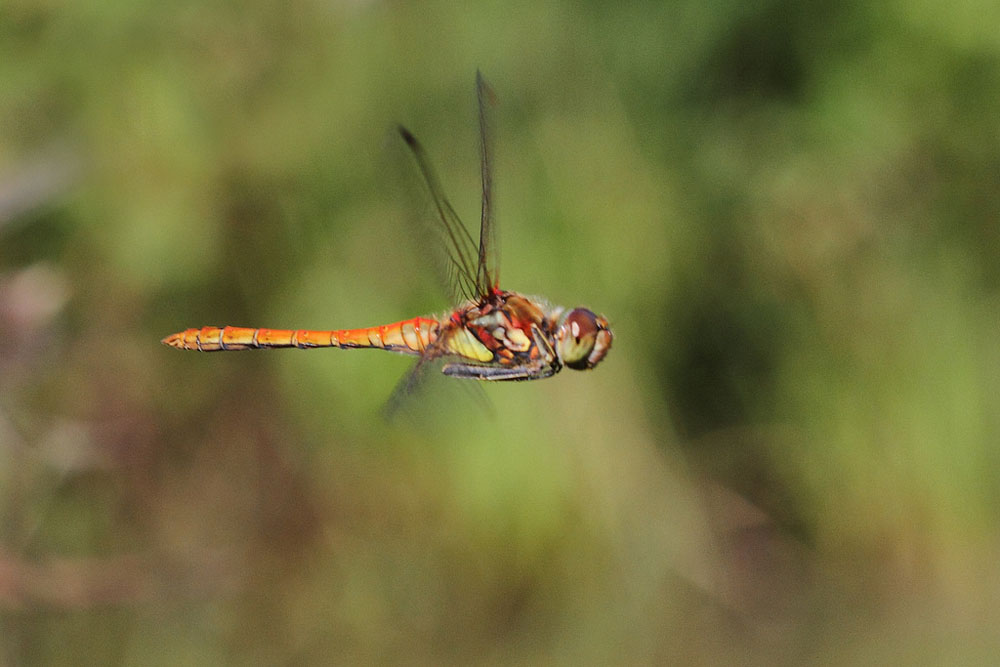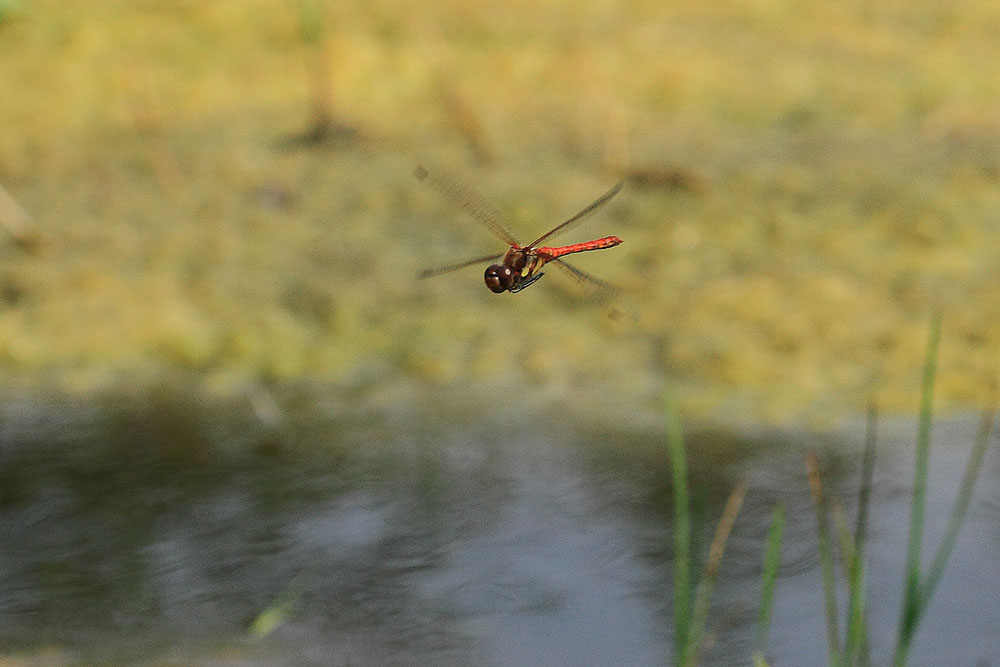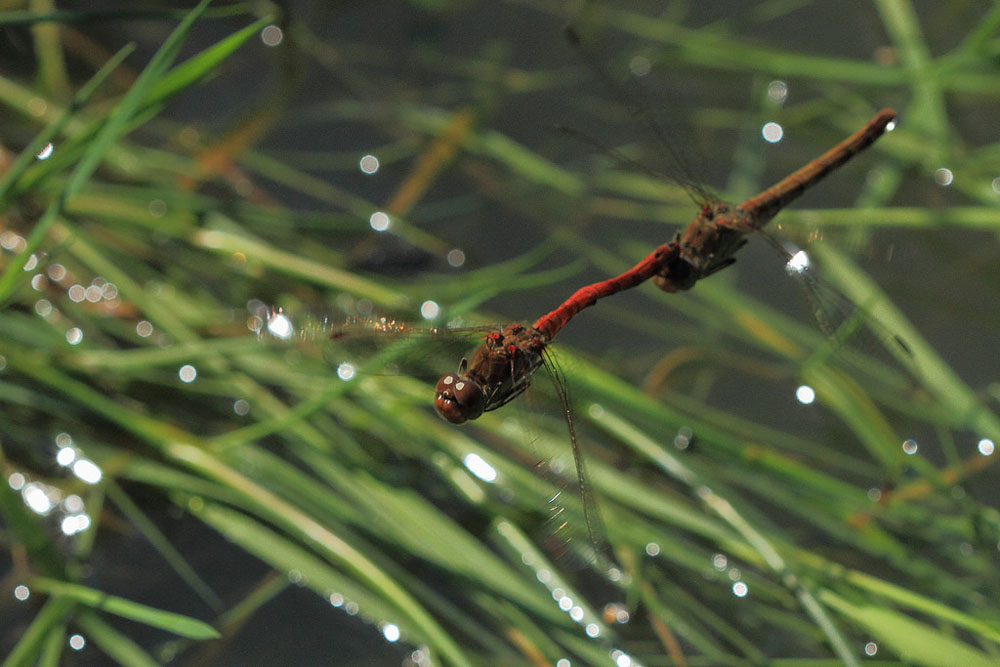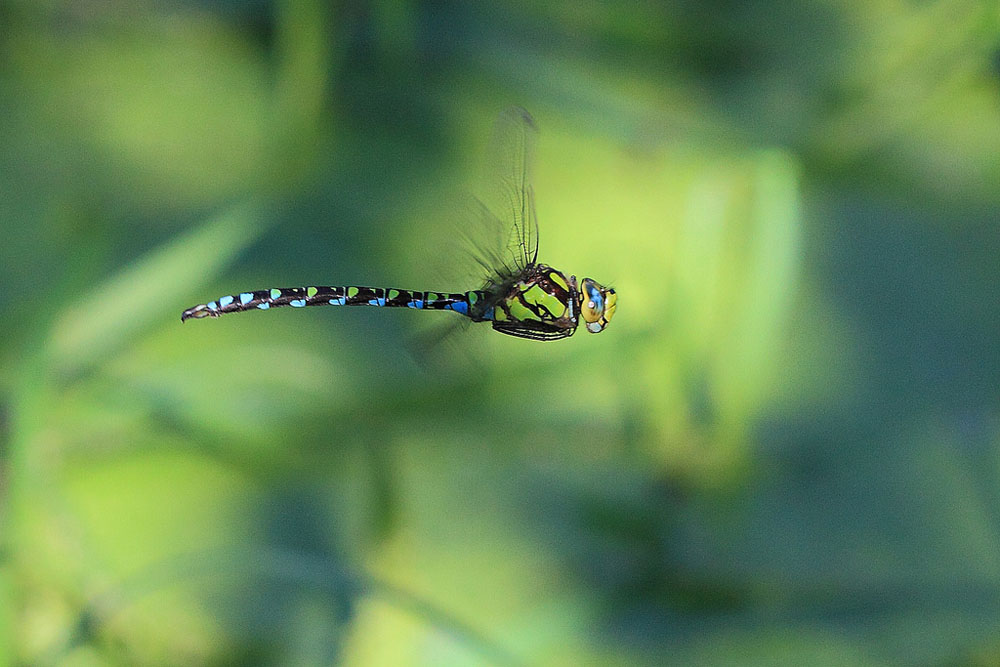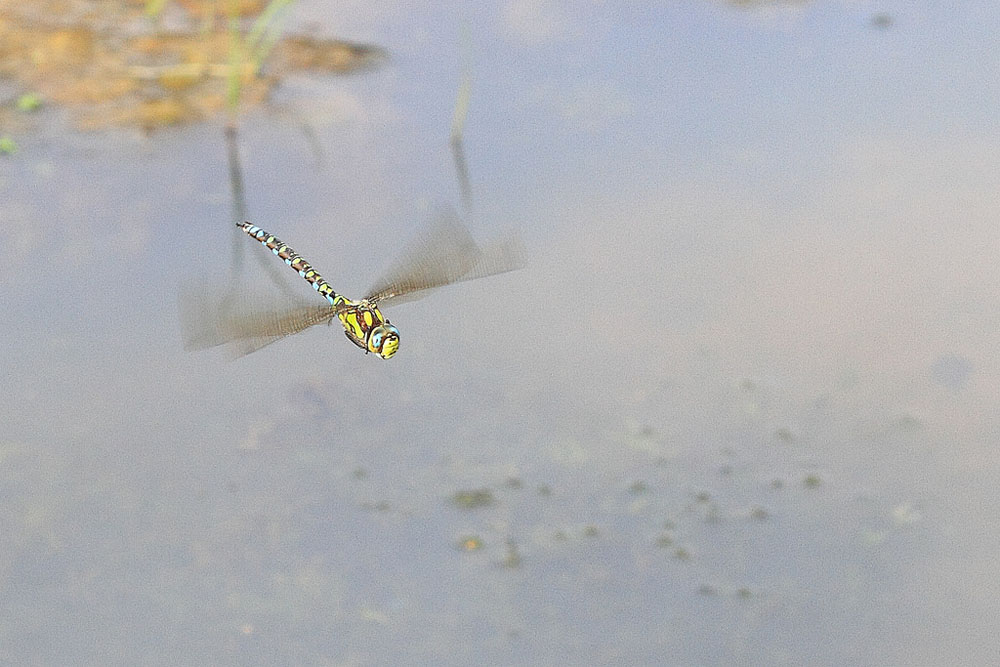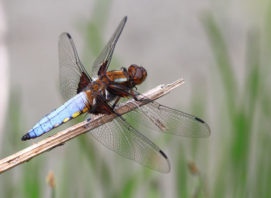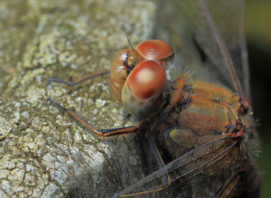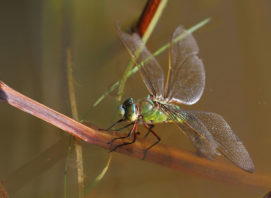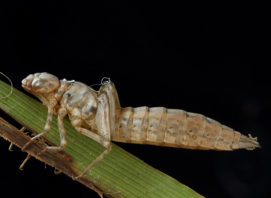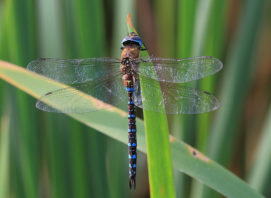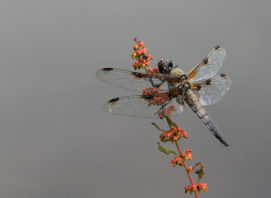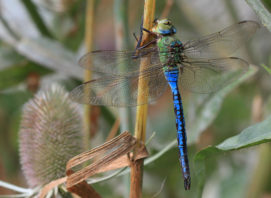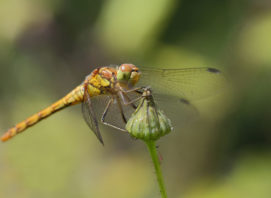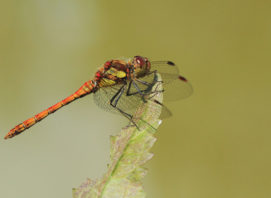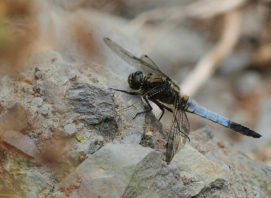Flying Dragonflies
Photographing dragonflies in flight is particularly challenging and difficult, especially with the short focal length of a macro lens. However, with patience, perseverance and above all a planned approach, it is possible to take some decent captures. The secret is to spend some time observing their flight patterns in order to predict where one will be at the moment that the shutter is pressed. Trying to follow a dragonfly while looking through the viewfinder is frustrating and highly futile simply because it is far too fast! I find it far better to establish what their flight path will be so that I can focus on an area along that path before pressing the shutter at the split second the dragonfly crosses that spot.
The secret is to manually focus on an estimated distance and use around f/5.6 to f/8 to allow sufficient hyperfocal distance to keep the dragonfly in focus. A fast shutter speed is also necessary and this can range from 500 to 2500. Sunny days are best as they allow higher shutter speeds to be used. Furthermore, because I’m using a macro lens the dragonfly needs to get pretty close to the lens and on dull days the use of a diffused flash can help to augment the natural light and really lift the dragonfly from its background. If I’m lucky, the dragonfly will hover in mid air, making it easier to frame within the viewfinder. However, it’s never easy and most of the time the dragonfly will dart or change direction just before I press the shutter!
The captures on display were all taken with a Canon f2.8 100mm USM macro lens. The automatic focus on this lens along with the 19 focusing points of the Canon 7D are great in most situations but no automatic focusing system is going to be quick enough to focus on such fast and erratic moving subjects. This is why I prefer to manually focus on a particular spot. The distance is arrived at only after scrutinising the dragonflies’ behaviour. As with other areas of wildlife macro, success is as much to do with closely observing the behaviour of your subject as much as applying a sound photographic technique.

